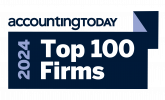The ACFE Anti-Fraud Playbook declares that fraud is happening at your organization; you just don’t know it, and then it provides ten “plays” drawn from best practices and leading guidance designed to help reduce fraud risk. One play provided as a best practice is the use of data analytics to uncover fraud.
The playbook asserts that data analytics is a powerful fraud prevention, detection and investigation tool, making it an important part of an effective and holistic fraud risk management program.
As part of utilizing data analytics in preventing and detecting fraud, you must understand and organize all relevant data. Preparing the data for analysis includes data extraction and consolidation and data cleansing.
Data extraction and consolidation is collecting the relevant data, selecting necessary records and variables and integrating or merging records from multiple data sources. One challenge of working with multiple data sources can be that some of the data may be organized and formatted (structured) and some of the data may be qualitative in its native format (unstructured).
Data cleansing should be employed: removing unwanted observations, fixing structural errors, handling missing data and managing unwanted outliers.
Preparing the data for analysis can be time-consuming. However, it is a valuable investment that is necessary at the beginning of a data analytics project in ensuring that data is ready for analysis. ETL (extract, transform, load) software such as IDEA or Alteryx is designed to assist in the data preparation phase.
The next step in evaluating potential fraud is then the actual analysis of the data itself. This can be done by utilizing statistical tools such as Alteryx, Excel, or Power BI. After the data is analyzed, data visualization software such as Tableau or Power BI can be used to understand and communicate the data.
It can be very challenging to know how to pull all of the disparate pieces of data together into a cohesive final analysis product that is useful in preventing and detecting fraud. Schneider Downs’ professionals have years of experience using the software listed above in data analytics projects and have helped many organizations prevent, detect or investigate fraud.
If you have questions or concerns about fraud risk, or would like to discuss the use of data analytics as a way to evaluate potential fraud, please contact Tom Pratt or Brian Webster.





